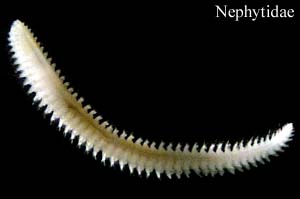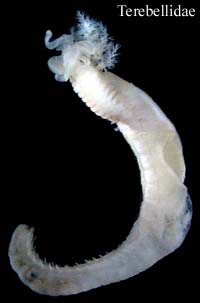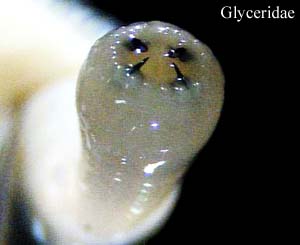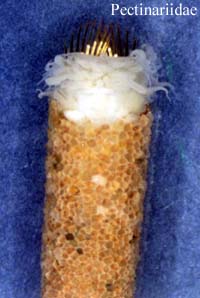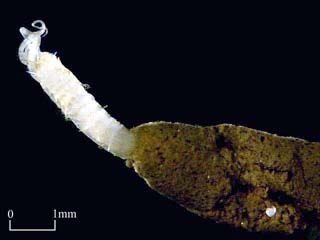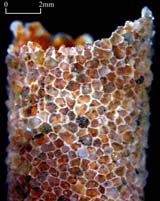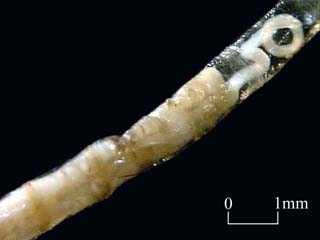 Sedentary Polychaetes:
Tube Dwellers Sedentary Polychaetes:
Tube Dwellers
The
sedentary polychaetes have its prostomium, proboscis and eyes reduced or absent.
Most of them live in tubes constructed by themselves in the mud or sand of the ocean
bottom. The tubes are straight or U-shaped with two openings. The
glands on the ventral surfaces of the segments secrete the tube-forming materials.
The tubes may be calcareous, membranous, simple mucus-lined burrows, or composed of sand
grains and other foreign materials cemented together.
The
sedentary polychaetes are not active swimmers as errant polychaetes, so the tubes are
important for protecting them from predators and catching prey. Any
disturances of predator or prey in the surrounding water can be transmitted to the tube.
Through the opening of the tube, the tube dwellers can get the clean and oxygenated water
above the mud and sand.
Many tube
dwellers are beautiful with colours such as red, pink, green or iridescent.
Their parapodia are usually small and short, or with rows of hooklike setae for gripping
the sides of the tube. Their anterior part are greatly elaborated for feeding and
respiration. The sabellids and serpulids have
prostomial tentacles developed to form a branchial crown of feather-like processes called
radioles. The peristomial tentacles of terebellids
are long, filamentous and extensile. The food is brought by beating of cilia
in a groove running along each filament. |
